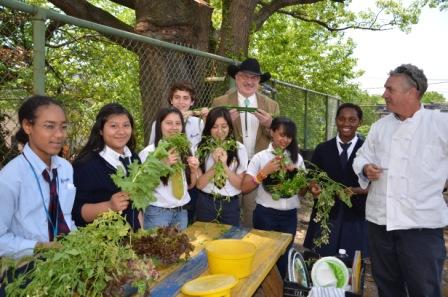 As the school year starts it is still summer and depending on where you are, it may still be very hot and humid. But everywhere in the continental U.S. the number of hours of sunlight is decreasing and you need to plan for the cooler, less sunny months ahead.
As the school year starts it is still summer and depending on where you are, it may still be very hot and humid. But everywhere in the continental U.S. the number of hours of sunlight is decreasing and you need to plan for the cooler, less sunny months ahead.
This is the time to plant for the fall, as well as placing over-wintering seeds and plants in your gardens. It is still warm enough to give them a fast start and get them established before the hours of sunlight diminish and cooler nights slow growth.
In the south and mid Atlantic states, for example, it will remain warm into October, and this is the time of year when we have the most beetles and bugs on our plants. But once it cools, especially at night, they will disappear quickly. The bugs tend to go after leafy vegetables the most, but as the temperature drops and the bugs dissipate, plants like collards, kale, chard, and lettuces will bounce back. These plants actually do much better in the cool months, even after temperatures go below freezing.
Of course you need to keep your garden well watered and weeded throughout the year, but this
time of year also make sure to keep your garden picked of all ripe fruits, vegetables and herbs, especially the summer vegetables like tomatoes, eggplants, cucumbers, beans, peppers, chilies, okra and summer squash. All these summer vegetables are at the end of their productive lives, and if they stop getting picked, they won’t continue and they will die. These summer plants are of course slowing down production with less light and cooler temperatures, and they will die when the first frost comes.
 What to do in the garden in September
What to do in the garden in September
- Always weed and water. Rejuvenate your garden after the long summer.
- Clean out all dead plants, or trim away dead parts of plants. Make a compost pile.
- Keep your summer plants picked, so they keep producing as long as possible.
- Plant seeds and plants now for the fall and winter. Consider planting peas, radishes, leafy greens, lettuces, onions, garlic, beets, carrots, and turnips.
- Put together a plan for your garden, month by month, for the whole year now. Organize students, school staff, parents or community members to tend it. A garden grows all year long and the most complicated part of the garden is the people not the plants. You have to always be at least a season ahead of the garden for it to be a success.
- Use the garden with your students to teach science, math, reading, writing, art, and more! A garden can be used to teach all sorts of things, not just the importance of healthy nutrition and fresh, locally grown foods.
Photo 1: Students at Paul Middle School in Washington, D.C. tending to their school garden during International Volunteer Day.
Photo 2: Students from Paul Public Charter School show off the vegtables from their school garden with Arthur Blazer (center) USDA Deputy Under Secretary for Natural Resources and Enviroment and Mark Haskell (far right)


